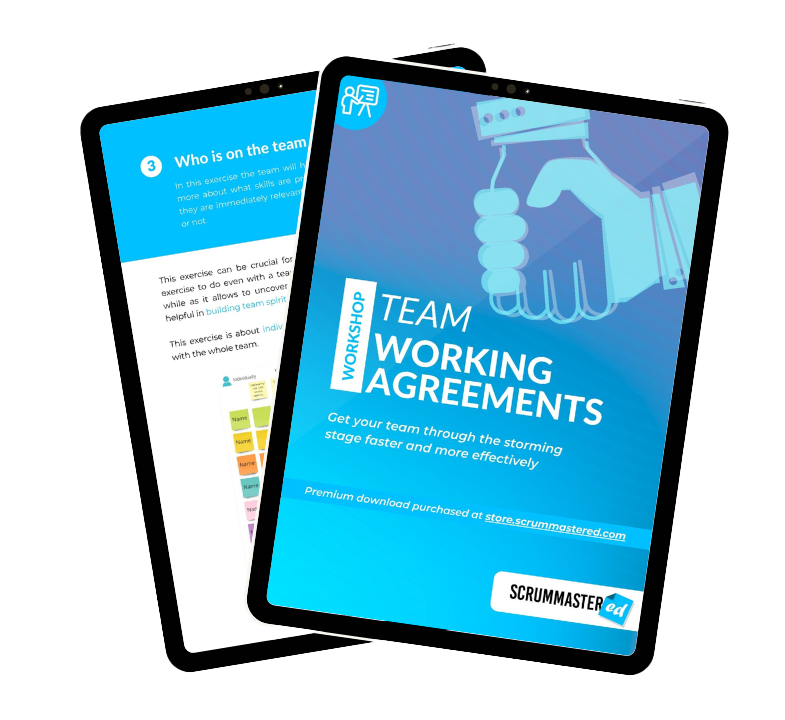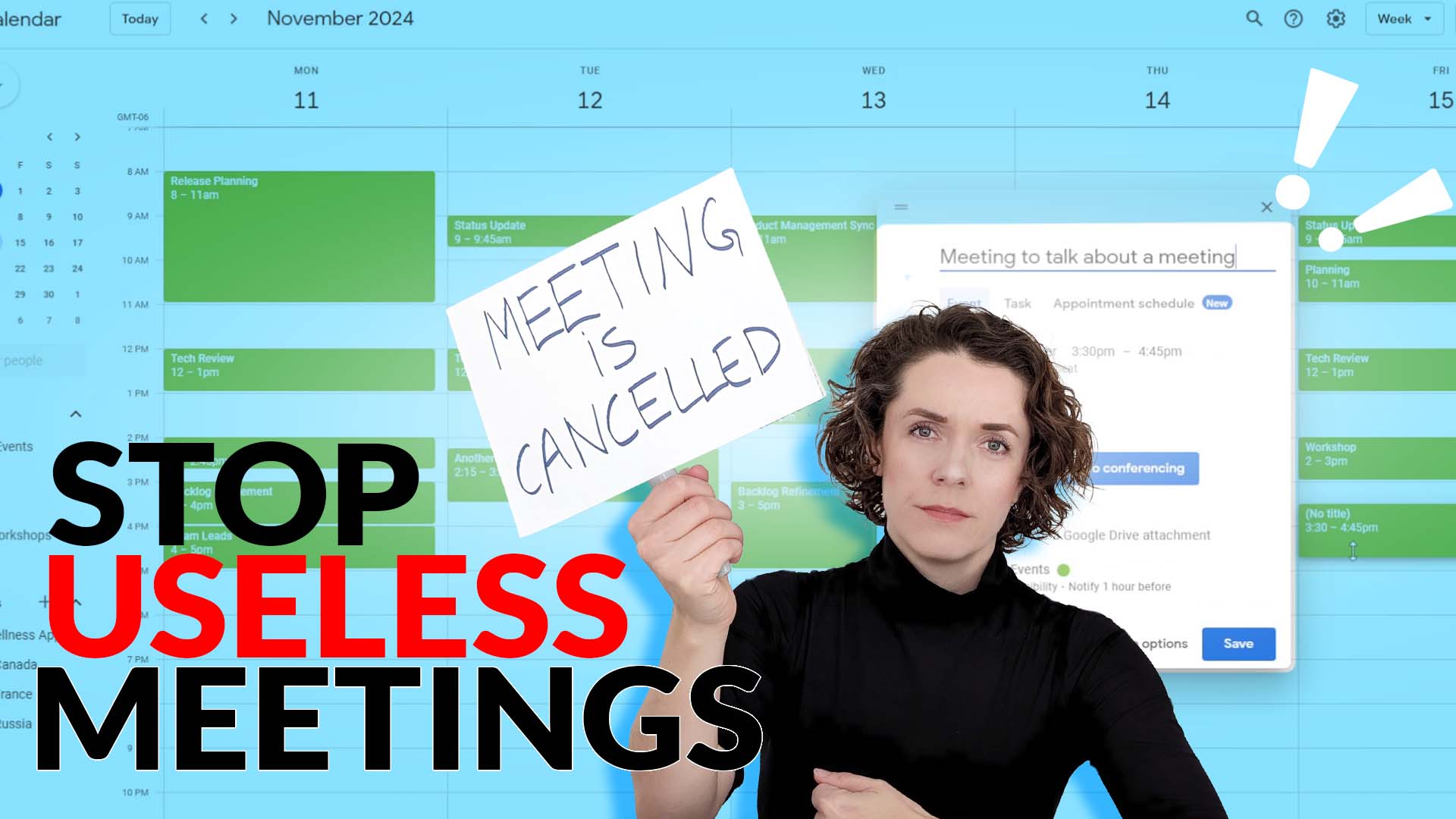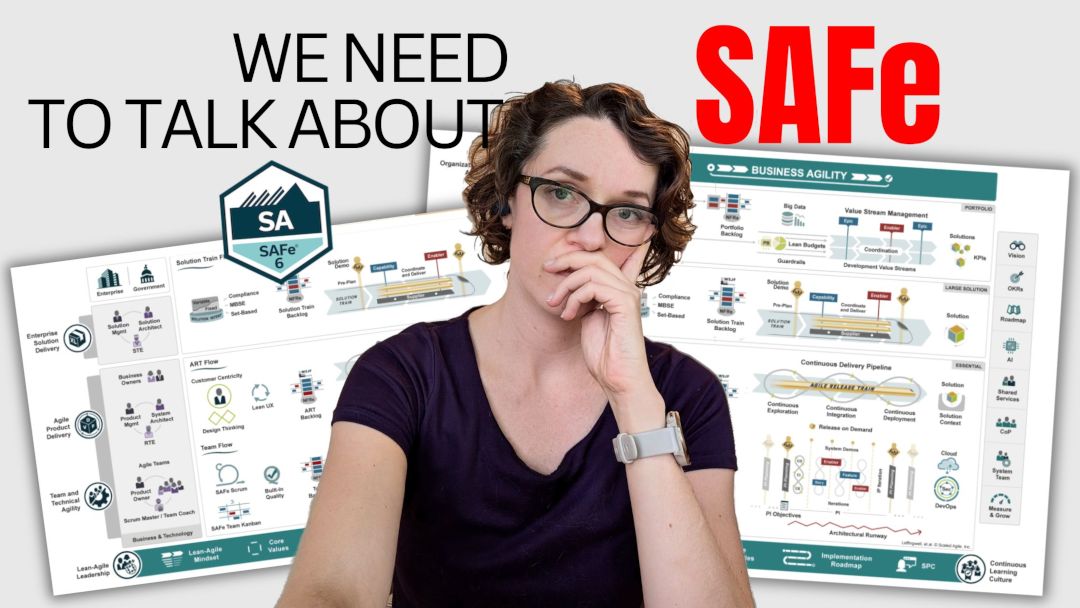Did you know that one single person can destroy a whole team, project, or even a company?
It’s true!
One toxic employee will gradually create unbearable working environment that will stop any real progress towards common goals.
EVEN if this one person is a super star in what they do.
Watch the video or keep reading.
Toxic work environments
In this video I’d like to talk about toxic working environments: how to recognize them and what to do about it.
I’m sure each of you can remember at least one time you had to interact with someone you didn’t necessarily liked at work.
That’s normal – we can’t all be friends after all.
However, there is a difference between working with someone you disagree with or just don’t like versus working with someone toxic.
In the first scenario, the effect is often very centered around a single person or situation. So it is easier to address.
In the second scenario, toxicity spreads like fire to everyone involved and has long-term impacts on your team.
So how do you recognize if someone is acting in a toxic way?
Toxic workplace checklist
So the question was: how do you recognize if someone is acting in a toxic way?
Based on my experiences, I find that it often comes from the individual ego of the person.
We’ll define Ego here as a person’s sense of self-esteem or self-importance.
When our ego is in check with reality, then we can easily adapt to other people’s opinions, ideas, and goals.
However, when the ego is misaligned, then people often have issues with:
- Committing to common goals and putting their personal goals aside;
- Agreeing to other people’s opinions;
- Being able to engage in healthy conflict;
- Acknowledging other people’s achievements;
- And recognizing their own mistakes or shortcomings.
Manipulation & gaslighting
Unfortunately, toxicity can be hidden behind the mask of manipulation and gaslighting.
So you have to pay attention to that as well.
What could it look like? Here are a few examples that I’ve seen myself:
- Putting blame on others when things don’t go well, while taking on the reigns personally when everything works out.
- Overpromising delivery to please people up the hierarchy ladder knowing that it is unrealistic, and hence putting the whole team at odds.
- Miscommunicating or hiding important information.
- Talking about the team or team members in bad light to others, sometimes, even when not prompted.
Signs inside the team
Well, these are the things that might be happening outside of the team, maybe seen externally.
But there are a few signs of toxic behavior within the team as well that you can usually observe yourself:
- Talking down to other people in the team, being condescending or even passive-aggressive.
- Ignoring others. For example, when someone shares their opinion in a meeting or sends a message with a question, the person might just pretend that they didn’t hear or see anything.
- Doing things that go against what was agreed on or even re-doing other people’s work without them knowing.
- Working in a complete silo, and even refusing to share work updates to the team.
You might think that these behaviors are all too obvious and anyone would be able to notice and report them.
However, based on my experiences, that manipulation and gaslighting often gets in the way of seeing the issue and addressing it in time.
The results of toxic workplace environment in a team
So what actually happens if these behaviors are not addressed?
I’ll use this simple model to visualize it.
MORALE → RESULTS → TEAM
When a team is forced to exist in a toxic environment their morale will go down at an exponential rate.
The longer the toxic environment persists, the worse the situation will get, and the harder and harder it will become to recover from it.
Team members might even show the signs of burnout.
When the team is not excited about coming to work because of the toxic environment, their work results will become worse al well.
This is where that toxic behavior of blaming failures on others actually starts to impact the perception of the team by the management.
It is true that the team might not be doing such a great job at that time, but you must consider the underlying reason for it.
And in the end, who wants to be part of a toxic team that is not respected by others?
I definitely wouldn’t want to be.
So the very last thing that is going to happen is that you will lose your people.
Who to look out for
One of the key reasons why the toxic behaviors are not addressed is because the person conducting them is very good at their job.
The company believes that a very good expert will outshine a team of ok employees.
However, experience shows that it is not the case and it leads to bigger problems long-term than the short-term gains the company might get.
The benefits don’t outweigh the risk.
Remember: the whole point of having a team is to get the benefits of teamwork such as boosted productivity, better problem solving, increased potential for innovation, and more.
Just think about it. Say we are building a house. I can be a master builder, but will I do a better or faster job than a team of specialists that bring their own expertise?
Don’t let one super star destroy a good team.
As Duddits in Dreamcatcher said “One worm kills the world”

Team Agreements Workshop
Help your team agree on how they want to work together and get to the performing stage faster with this workshop.
What you need to do
The first action to take once the toxic behavior has been recognized, is to try to address it with the person in question.
It means you have to have a serious and very uncomfortable conversation with them about their behaviors and their impact on the team.
Create an improvement plan and evaluate how it is going at regular intervals. I’d say every week.
However, don’t let it go on for too long – you must see some improvements right away.
And if all else fails, you have to consider that having this person on the team or even in the organization is costing you too much and will cost you even more if they stay.
So yes, the unfortunate truth is: if you haven’t seen any improvement and the toxic behavior continues, you have to remove this person from the team.
You might be thinking – “can’t we just skip the improvement plan and just fire the person?”
To that I’ll quote here:
“Firing someone is often the last act of cowardice not accountability. Sometimes it’s necessary, but not always”.
BUT!
When it’s necessary it has to happen fast!
Why you shouldn’t wait
What I see very often is that leaders wait way too long to take the necessary action that by the time it has been taken it’s too little too late.
The irreversible damage has been done, and the team most likely will never recover from it.
It means that you’ll have to build a brand new team, and that will take a long time.
I’ve worked with a company that took 6 months to fire someone after it has been made clear that this person has to go.
By the time they left the product they were working on got so out of hand, that no other team wanted to touch it.
And in addition, the company lost several great team members who just didn’t want to wait for the problem to get fixed.
If you waited to long, even if you remove the toxic person before everyone quits, it will be quasi-impossible to restore the team morale.
There is a sort of PTSD that forms associated with the team or the company that people prefer to avoid. Rightly so!
However, if you do this in time, removing just one person may revitalize the team and set them off on a new start!
Conclusion
In conclusion, the key thoughts for you today are:
- A good team will achieve greater goals than one super-star.
- One toxic person will destroy a good team.
- Toxic behaviors may be hidden behind poor team performance.
- When the team is forces to exist in a toxic environment for a prolonged period of time their morale will drop, then their results will drop, then they’ll quit.
Prevent your team from getting into this situation as soon as possible.
For example, having good team working agreements or social contract is a great practice to implement.
- How does your team communicate?
- How does it deal with disagreements?
- How does it make decisions?
Set some time aside for your team to discuss and agree on these and other related questions.
If you need some help in facilitating a team working agreements discussion, then check out my Team Working Agreements workshop guide.
There I give you step-by-step instructions on how to facilitate a productive conversation, with templates and exercises you can use.
Have you ever worked with a toxic employee? How did you handle the situation? Share in the comments 👇



